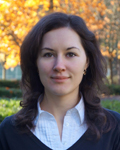Even though one school bus replaces 36 cars on the road, student transportation systems contribute to global climate change and are still a target for air pollution reductions. This puts a lot of pressure on schools to adopt “green” business practices and decrease their fleet’s carbon footprint. Efficient route planning and vehicle tracking tools can help significantly improve the situation and even lower operating costs, while helping save the planet.
Optimizing Routes, Reducing Gas Emissions
One of the most challenging tasks for a school district is designing the optimal set of routes for the bus fleet that minimize fuel consumption while providing a valuable and accessible transportation service. The less time it takes vehicles to travel from point A to point B, the more money the organization saves on fuel, while reducing greenhouse gas emissions. A decrease in distance travelled to pick up and drop off students also results in significant carbon reductions.
To optimize the logistics, a student transportation department needs to have integrated vehicle and video surveillance data showing every school bus with its status, including speed, direction, idling, and stops, on an easy-to-use map layout. The best tracking and routing systems will offer a real-time view of your fleet operations with multiple options to adjust the routes according to your district’s needs. Integrated with vehicle data, the right routing software can provide detailed reports to help identify potential fuel savings opportunities. By using such a solution, you can re-assign drivers and routes to vehicles in case of emergencies such as driver or student illness, bus breakdowns, or maintenance needs. By sending the closest available vehicle to pick up kids, the school district reduces overall fleet mileage and fuel consumption, saving money on operation costs and decreasing levels of greenhouse gases in the environment.
Idling Reduction with Advanced Reports
Over the last few years special attention has been devoted to reducing idling. Idling affects human health, pollutes the air, wastes fuel, and causes excess engine wear. Diesel exhaust contains fine particles that, after passing through the nose and lodging in the lungs, can be the cause of lung damage and premature death. This is especially dangerous for children’s health. The same exhausts contribute to global climate change and acid rain formation, increasing damage to the environment. To add to this, unnecessary idling results in significant increases in fuel consumption and ultimately fuel costs. If each school bus reduces its idling time by 30 minutes per day, a company operating 16 buses could save over $2,500 per school year in reduced fuel costs.
Many US states have passed laws pertaining to this issue, especially West Coast states, such as California and Hawaii, where stronger green policies are in place.
To make sustainable fleet management possible, routing and tracking technology must have advanced reports which include information on excessive school bus idling. For example, Seon’s vMax Live Plus system allows users to create instant or scheduled reports to list recorded behavior for specific vehicles, drivers, and routes. Transportation supervisors can quickly find summarized information on stops, distances travelled, and zone deviations. vMax Live Plus also provides a detailed report on idling duration which will show when, how often, and for how long specific vehicles have been stationary with the engine running for longer than a preset time length. With this information, the school district can easily address the problem and operate a greener school bus fleet.
Interested in learning more about routing and tracking for sustainable fleet management? Get more information here.

Vlada Terenina
Marketing Coordinator | Seon
vlada.terenina@seon.com


